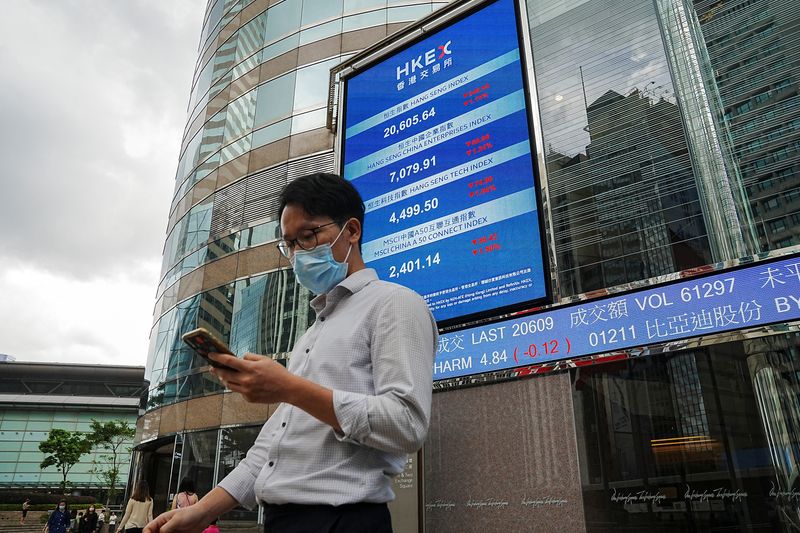By Isabel Kua
SINGAPORE (Reuters) -Oil prices climbed on Wednesday, paring losses from the previous session, as investors jumped into riskier assets such as commodities amid gains in broader equity markets and on signs of renewed demand from top oil importer China.
Brent crude futures for December settlement rose 22 cents, or 0.2%, to $90.25 a barrel by 0620 GMT.
U.S. West Texas Intermediate crude for November delivery was at $83.50 a barrel, up 68 cents, or 0.8%. WTI’s front-month contract expires on Thursday and the more active December contract was at $82.66, up 59 cents, or 0.7%.
In the previous session, Brent fell by 1.7% and WTI by 3.1% to their lowest in two weeks on reports of U.S. President Joe Biden’s plans to release more barrels from the Strategic Petroleum Reserve (SPR).
Oil prices were also buoyed as risk sentiment was lifted by upbeat U.S. corporate earnings and rising equity markets.
“The small rebound in oil prices is more likely due to more positive sentiment on the equity bourses and return of risk on trades (rather) than industry fundamentals,” said Suvro Sarkar, lead energy analyst at DBS Bank in Singapore.
Prices were also supported on signs of resurgent Chinese demand. Private mega refiner Zhejiang Petrochemical Corp (ZPC) won additional crude oil import quota for 2022 of 10 million tonnes and state-run ChemChina received a further quota of 4.28 million tonnes. That is equal to about 104 million barrels.
The pending European Union ban on Russian crude and oil products and the output cut from the Organization of the Petroleum Exporting Countries (OPEC) and other producers including Russia, a group known as OPEC+, of 2 million barrels per day also kept prices strong.
The OPEC+ cut and EU embargo will squeeze supply in an already tight market. The EU’s sanctions on Russian crude and oil products will take effect in December and February, respectively.
“With EU ban on Russian crude looming in early December, we would still be overall bullish than bearish on oil at current levels,” DBS’ Sarkar said.
To plug the gap, President Biden will announce a plan later on Wednesday to sell off the remainder of his release from the SPR and detail a strategy to refill the stockpile when prices drop, a senior administration official said.
In December, the administration plans to sell 15 million barrels of oil from its reserves, the final tranche of the 180 million barrels release announced earlier this year, a senior U.S. official said.
U.S. crude oil stockpiles fell by about 1.3 million barrels for the week ended Oct. 14, according to market sources citing American Petroleum Institute figures on Tuesday. Gasoline inventories declined by about 2.2 million barrels while distillate stockpiles dropped by 1.1 million, the sources said. [API/S]
U.S. crude inventories were expected to have increased for a second consecutive week, rising by 1.4 million barrels in the week to Oct. 14, an extended Reuters poll showed on Tuesday.
Inventory data from the Energy Information Administration, the statistical arm of the U.S. Department of Energy, is due at 10:30 a.m. (1430 GMT) on Wednesday.
(Reporting by Isabel Kua; Editing by Ana Nicolaci da Costa, Christian Schmollinger and Tom Hogue)


